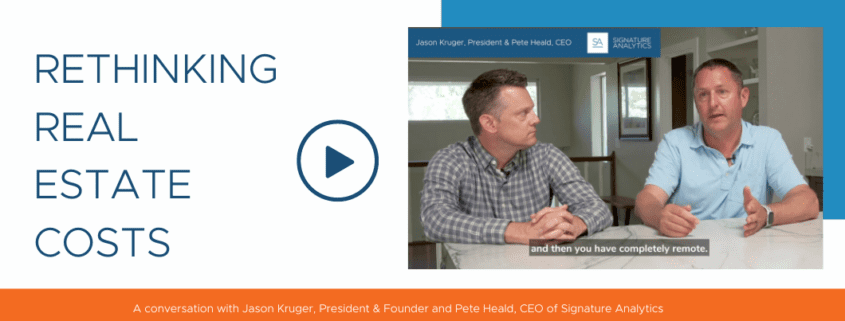Rethinking Real Estate Costs in a Slowing Economy
In the ever-shifting business landscape, one of the significant overheads that organizations grapple with is real estate costs. The lingering impacts of the COVID-19 pandemic have redefined the traditional workspace model, prompting companies to reevaluate their real estate strategies. Here’s how businesses can optimize their approach to real estate to remain resilient in a slowing economy.
The Post-COVID Workspace Conundrum
Three prominent workspace models have emerged in the aftermath of the pandemic:
- Full-time in-office: A model many companies have adhered to for decades, but one that’s now being received with apprehension by employees post-pandemic.
- Hybrid: This model offers flexibility, with employees spending a few days in the office and the rest working remotely. It appears to be the middle-ground many are leaning towards.
- Completely Remote: With the entire workforce operating remotely, this model completely eliminates the need for physical office space.
Our company, along with many others, found that a full-time return to the office post-pandemic wasn’t feasible if we intended to retain top talent. The hybrid model, while attractive, poses its own set of challenges. How does one justify the complete cost of real estate if it’s being used only a fraction of the time?
The Remote Advantage
Choosing a fully remote operational model allowed us significant savings on real estate costs. Not only did this free up cash, but it also provided us the flexibility to redirect those funds towards enhancing company culture, a component that can sometimes be diluted in a fully remote setting.
However, going fully remote isn’t without its challenges. Maintaining a unique company culture, ensuring adequate training and development for new entrants, and fostering team cohesion are all areas that require careful consideration.
Evaluating Real Estate as a Business Expense
Every cost in business should be measured against the value it brings. From a cash flow perspective, the savings from eliminating or reducing real estate costs can be significant. Additionally, going remote or adopting a hybrid model can open up doors to a wider talent pool, no longer restricted by geographical boundaries.
However, the decision shouldn’t be solely based on cash flow. It’s crucial to ask, “What value is this expense adding to my business?” If an expense, like real estate, isn’t adding the desired value, it might be time to reconsider.
The slow pace of the economy demands agility and adaptability from businesses. In such times, rethinking fixed costs like real estate and aligning them with the evolving needs of the workforce can not only result in cost savings but also lead to a more dynamic, resilient, and future-ready organization. As we sail into uncharted economic waters, businesses that periodically evaluate the value derived from each expense will be best positioned to thrive.
Prepare for a slower economy across the board with these insights from Jason Kruger and Pete Heald Weatherproofing your business for a slowing economy




